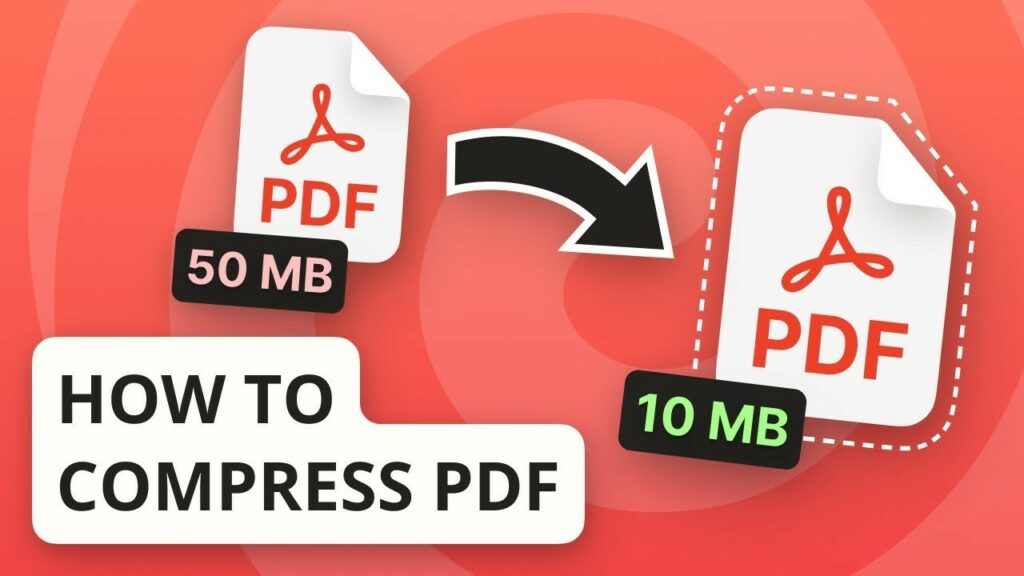In today’s digital landscape, where file sharing and storage are paramount, reducing the size of bulky PDF documents has become a necessity. Online PDF compression tools offer a convenient solution, enabling users to streamline their files without compromising quality. This comprehensive guide will delve into the intricacies of online PDF compression, exploring its benefits, techniques, and best practices.
What is PDF Compression?
At its core, PDF compression online involves the application of algorithms that identify and eliminate redundant data within a file, thereby reducing its overall size. This process is akin to compressing images or videos, where the goal is to reproduce the content with fewer pixels or data points while maintaining acceptable quality levels.
The benefits of compressing PDFs are manifold. Smaller file sizes not only facilitate easier sharing and faster downloads but also optimize storage space, making it an indispensable tool for individuals and businesses alike.
Benefits of PDF Compression Online
While desktop software and applications offer PDF compression capabilities, online tools have gained immense popularity due to their accessibility and user-friendly interfaces. With no installation required, these web-based solutions provide a hassle-free experience, allowing users to compress their PDFs from any device with an internet connection.
Online PDF compression tools typically follow a straightforward process: users upload their PDF file, select the desired compression settings, and then download the optimized version. This streamlined workflow ensures a seamless experience, even for those with limited technical expertise.
Compression Techniques: Balancing Size and Quality
Online PDF compression tools employ various techniques to reduce file size, each with its own set of trade-offs between compression efficiency and output quality. Some common methods include:
- Image Optimization: Since images often contribute significantly to a PDF’s file size, compressing or downsampling embedded images can yield substantial reductions. However, excessive compression may result in visible quality degradation.
- Font Subletting: PDF files often embed entire font families, even if only a subset of characters is used. By removing unused font data, file sizes can be reduced without impacting the document’s appearance.
- Object Removal: PDF files may contain unnecessary elements, such as metadata, embedded thumbnails, or redundant content streams. Selectively removing these objects can trim file sizes while preserving essential information.
- Data Compression: Advanced algorithms can identify and compress repetitive patterns within a PDF’s data streams, resulting in smaller file sizes without sacrificing content integrity.
When using online compression tools, users often have the option to adjust compression settings, allowing them to strike the desired balance between file size reduction and output quality.
Ensuring Data Security and Privacy
As with any online service that involves file uploads, data security and privacy should be a paramount concern when compressing PDFs online. Reputable online compression tools typically employ robust encryption protocols to safeguard user data during transmission and storage.
Additionally, many tools offer the option to remove sensitive metadata, such as author information or comments, from the compressed PDF, further enhancing privacy and data protection.
Step-by-Step Guide: Compressing a PDF Online
To help you get started, here’s a step-by-step guide to compressing a PDF online using a reliable compression tool:
- Visit the Online PDF Compression Tool: Navigate to the website of your chosen online PDF compression service.
- Upload Your PDF File: Locate the file upload section and either drag and drop your PDF file or browse and select it from your device.
- Adjust Compression Settings (Optional): If the tool provides compression settings, review and adjust them according to your needs. Consider factors such as desired file size reduction, output quality, and metadata removal.
- Initiate Compression: Once you’ve uploaded your file and configured the settings, initiate the compression process by clicking the appropriate button or link.
- Download the Compressed PDF: After the compression is complete, the tool will typically provide a download link or button to retrieve your compressed PDF file.
- Verify the Compressed File: Before using or sharing the compressed PDF, it’s advisable to open and inspect the file to ensure that the content and formatting have been preserved as intended.
By following these simple steps, you can leverage the power of online PDF compression to streamline your digital workflow and optimize your file management practices.
Advanced Compression Techniques
For users with more advanced requirements or specific compression needs, some online tools offer additional features and settings. These may include:
- Batch Compression: The ability to compress multiple PDF files simultaneously, streamlining the process for those dealing with large volumes of documents.
- OCR Optimization: Techniques that optimize the compression of text layers and OCR data, ensuring that searchable text remains intact and legible.
- Password Protection: Options to encrypt the compressed PDF with a password, adding an extra layer of security for sensitive documents.
- Cloud Integration: Seamless integration with cloud storage platforms, allowing users to compress and store their files directly in the cloud.
By exploring these advanced features, users can tailor the compression process to their unique needs, ensuring optimal results for their specific use cases.
Best Practices for Effective PDF Compression
To maximize the benefits of online PDF compression, it’s essential to follow best practices and adopt a proactive approach to file management:
- Compress Before Sharing: Make it a habit to compress PDFs before sharing them, especially if you’re sending large files via email or uploading them to cloud storage.
- Maintain Backups: While compression algorithms are designed to preserve content integrity, it’s always advisable to maintain backups of your original, uncompressed files as a precautionary measure.
- Optimize Images: If your PDF contains images, consider optimizing them separately before embedding them in the document. This can lead to further file size reductions without compromising image quality.
- Collaborate Efficiently: When working on shared documents, encourage team members to compress PDFs before sharing, reducing the strain on storage and bandwidth resources.
- Automate Compression: For businesses or individuals dealing with large volumes of PDFs, consider implementing automated compression workflows or integrating compression tools into existing document management systems.
By adhering to these best practices, you can ensure that online PDF compression becomes an integral part of your digital workflow, streamlining your processes and enhancing productivity.
Conclusion
In the ever-evolving digital landscape, online PDF compression has emerged as a powerful tool for optimizing file management and facilitating efficient data sharing. By leveraging the convenience and accessibility of web-based compression services, individuals and businesses can effortlessly reduce the size of their PDF documents without sacrificing quality or content integrity.
Whether you’re a student sharing research papers, a professional collaborating on proposals, or a business owner managing vast document repositories, Imagelite online PDF compression offers a versatile solution to streamline your digital workflows. Embrace this technology, and unlock the benefits of optimized file sizes, faster transfers, and enhanced productivity.



